
Culture and Trauma Brief: Cultural and Family Differences in Children's Sexual Education and...
Describes the cultural and family differences in children’s sexual education and knowledge.
The following resources on child trauma were developed by the NCTSN. To find a specific topic or resource, enter keywords in the search box, or filter by resource type, trauma type, language, or audience.

Describes the cultural and family differences in children’s sexual education and knowledge.
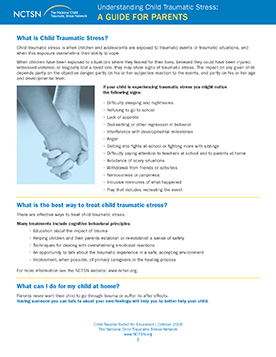
Offers parents information about child traumatic stress (CTS), the best way to treat CTS, what parents can do at home for their children, and how parents can make sure their children receive support at school.

Offers caregivers advice on helping children deal with the complex emotions that arise when the death of family member or other important person in a child's life is suspected, but not confirmed.
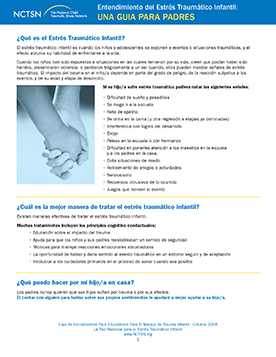
Offers parents information about child traumatic stress (CTS), the best way to treat CTS, what parents can do at home for their children, and how parents can make sure their children receive support at school.
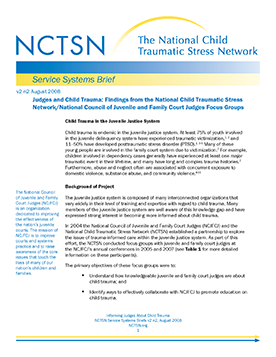
Summarizes findings from focus groups.
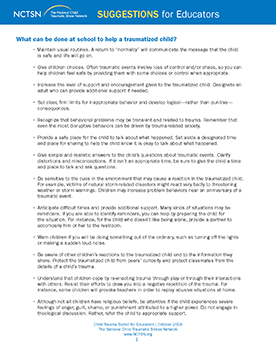
Offers suggestions to educators about what can be done at a school to help a traumatized child. This tip sheet describes very practical ways school staff can help children who have experienced trauma.
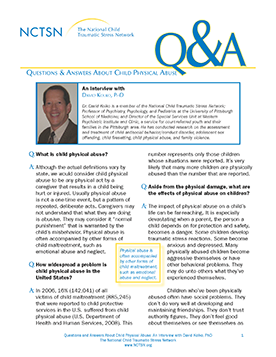
Offers parents, caregivers, and providers answers to commonly asked questions about child physical abuse.
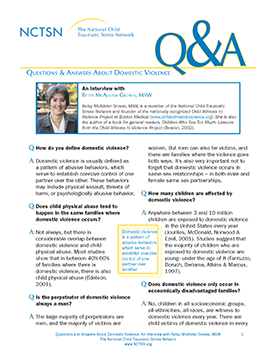
Provides parents and professionals with the answers to commonly asked questions about the impact of domestic violence on children.
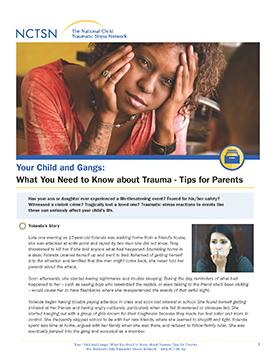
Provides parents and caregivers with information gangs and trauma. This fact sheet offers a brief vignettes about teens who have become involved with local gangs.
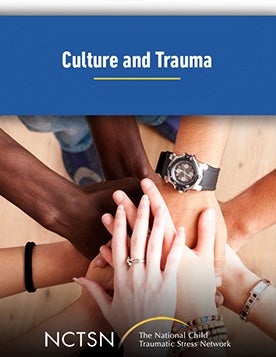
Discusses the trauma treatment needs of rural youth and families.
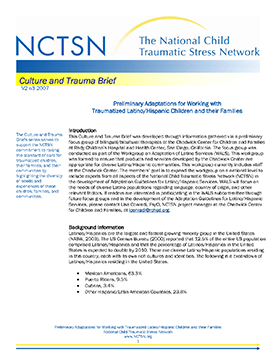
Describes adaptations for working with traumatized Latino/Hispanic children and their families.
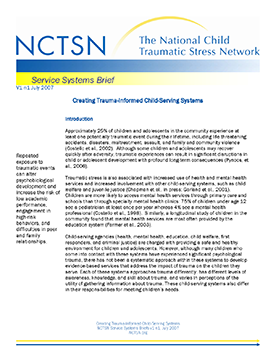
Summarizes the importance of trauma-informed systems.